Using modern materials for exterior decoration of the house, by installing modern windows, making the French glazed loggia, you can successfully perfect any facade. This is by no means a luxury, but a necessity for the facades of private houses, because they are constantly exposed to unfavorable weather conditions, and also serve as the "face" of the owners of this house. Here the actual quality decoration of the facade of the house for owners of old buildings is especially important, as it helps to effectively hide all the defects of such a house that have appeared during the years of operation. In this article we will consider the advantages and disadvantages of modern finishing materials and give useful advice on their selection and use.
Content
Types of finishing materials for the facade of the house
First of all, when talking about finishing materials, we can not fail to mention plaster. This is a truly universal and actual for all times wet (with a coating directly on the surface of the wall) the look of the facade of the house. Stucco is a unique material. All other modern decoration materials are attached to the walls as a lining, and the plaster is applied to the wall surface, leveling it and correcting all the imperfections. Today on sale you can see whole sets for plastering walls. Do not be afraid of this work - it is actually uncomplicated, and the effect, as they say, on the face - the facade of the house will be protected and refined for many years.
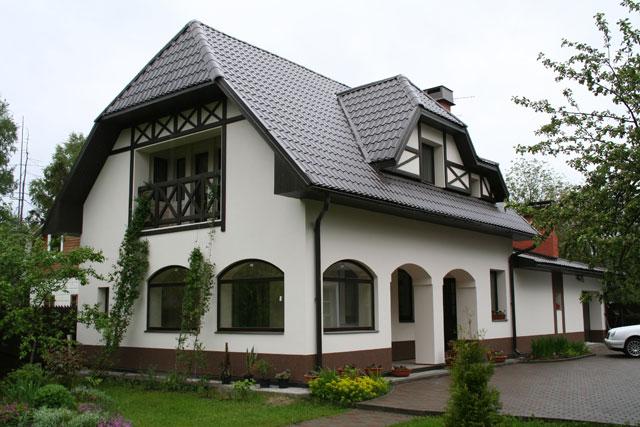
Most often plastering works are carried out with the purpose of preparation of walls before painting of a facade of the house. There are two types of plaster used for exterior finishing of the house - gypsum and cement. Gypsum plaster, as the name suggests, is prepared on the basis of gypsum. Its cost is noticeably higher than cement, but it will also last longer. In addition, gypsum plaster is much more pleasant than cement plaster, because it is more ductile, has much higher adhesion properties, which gives better adhesion to the surface on which it is applied. The walls made by gypsum plaster "breathe", letting the air through them, they do not over-moisten, do not mold, do not rust and do not rot.
Siding is an excellent material for the exterior decoration of the house. Indeed, modern decoration materials look very impressive, pay attention to the photo:
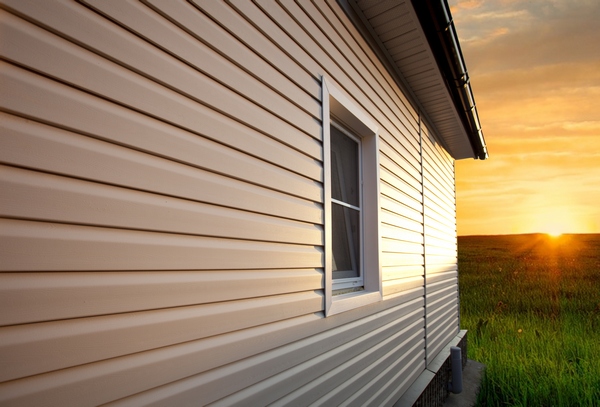
Siding, the finishing material for the facade of the house, is really very simple to install and install - you do not need any special tools for its cutting and mounting on the wall.
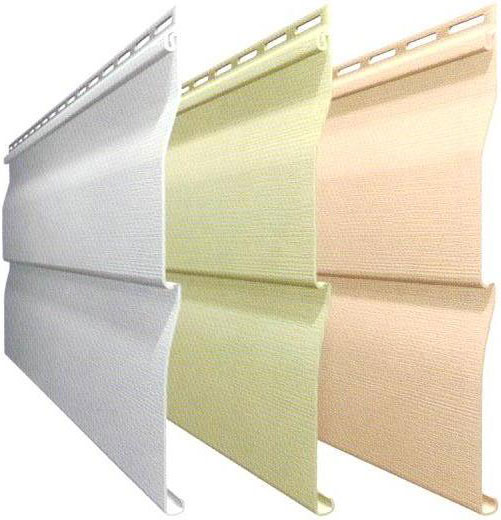
There are several types of siding on sale. More often as a finishing material for the facades of private houses use vinyl siding (it is also called PVC siding). Also popular metal siding, which, in turn, is steel, aluminum, or sometimes copper. Also siding is wooden, or simply wood, and also cement (it is used for finishing the basement of the house).
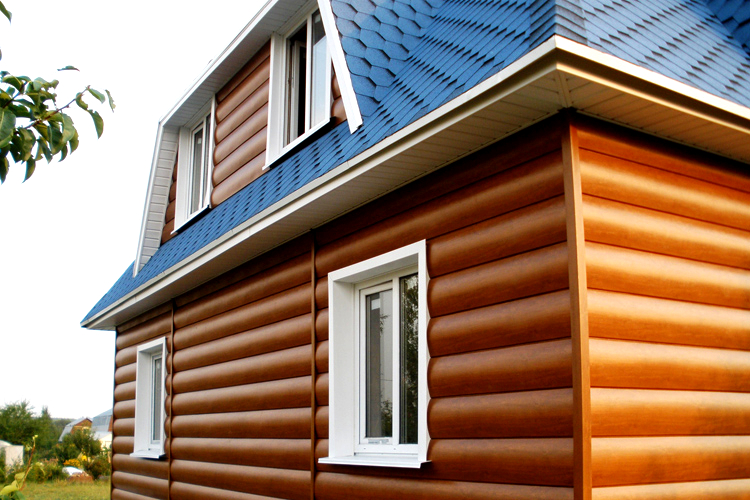
Siding - a modern finishing material, does not rot and is not exposed to corrosion. This is possible due to the fact that during its manufacturing the siding is treated with special solutions that form on its surface a special protective film.
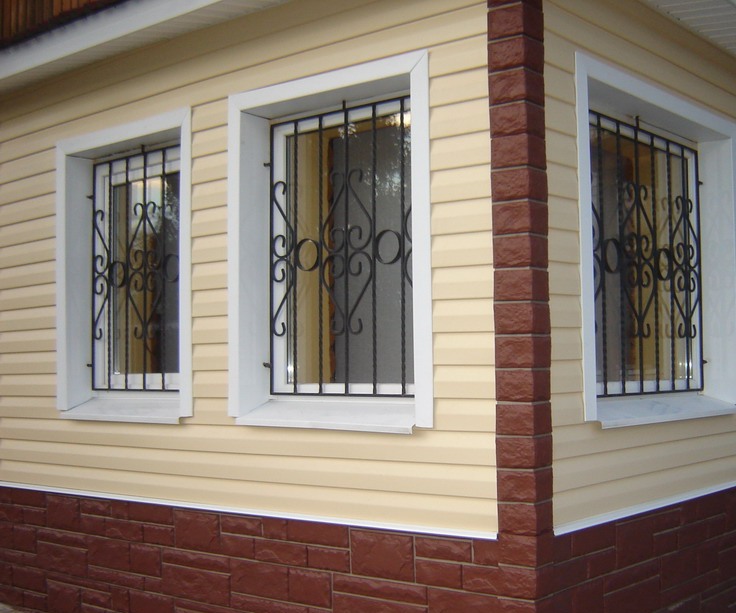
Brick facing - a popular, time-tested, finishing material. If you want to not only decorate the house, making it attractive, but also to insulate, then facing brick is just what you need! This finishing material has both smooth and corrugated surface, it is monochrome, and colored, both with patterns and imitation of real stone. The starting material of the finishing brick is clay mixed with various modifying special additives, giving it increased strength and durability. Finishing bricks are a material with rather low moisture absorption and high frost resistance, as well as reduced thermal conductivity.
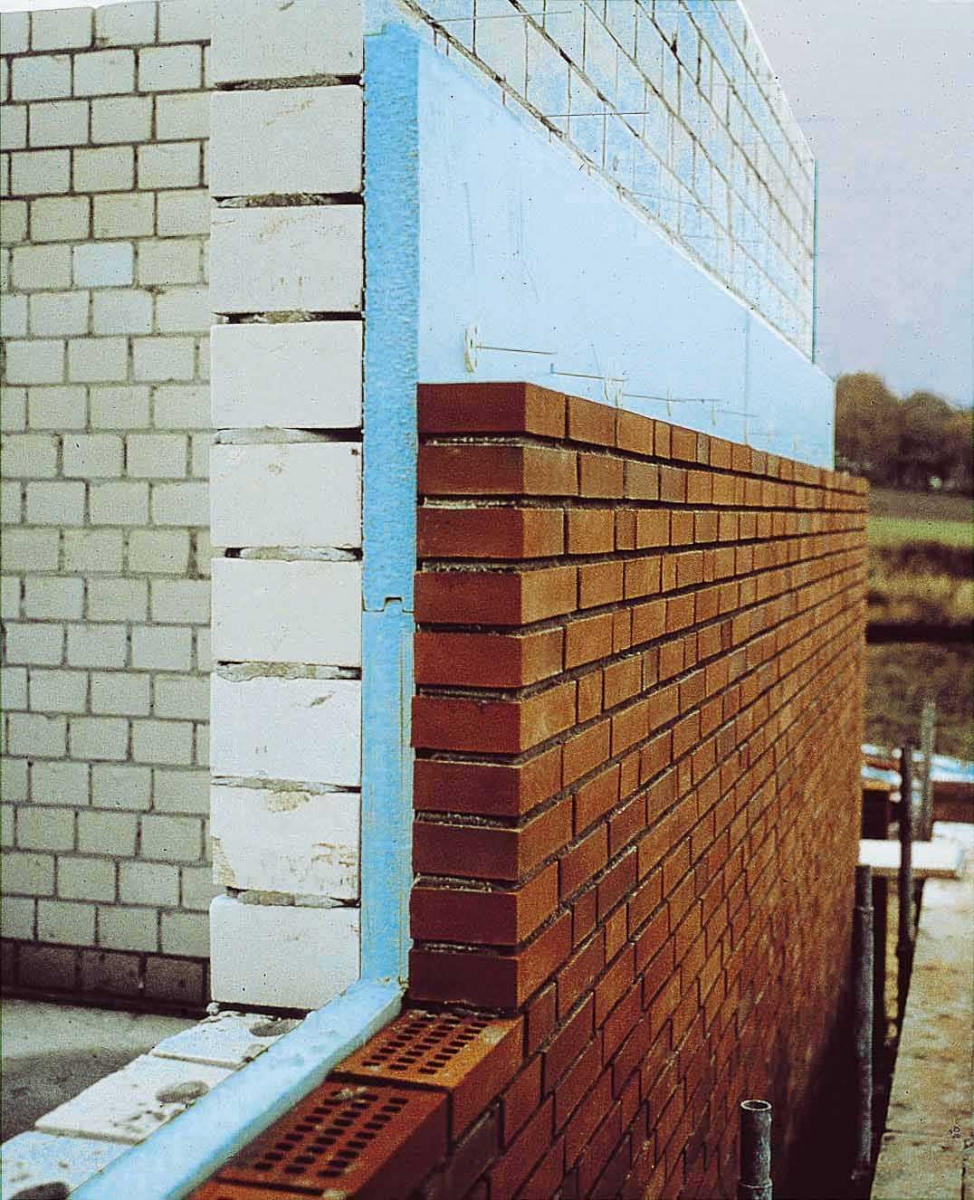
Very popular today is a modern finishing material, like an artificial stone. Unlike natural stone, artificial stone has a much lower weight, and therefore can also be used in finishing houses with a weak foundation. In specialized stores, you can choose an artificial stone of any color or texture, both with a smooth flat surface, and with a grooved, picking it up with other finishing materials (combine it with metal products, or with wood, as well as with ceramics, etc.).
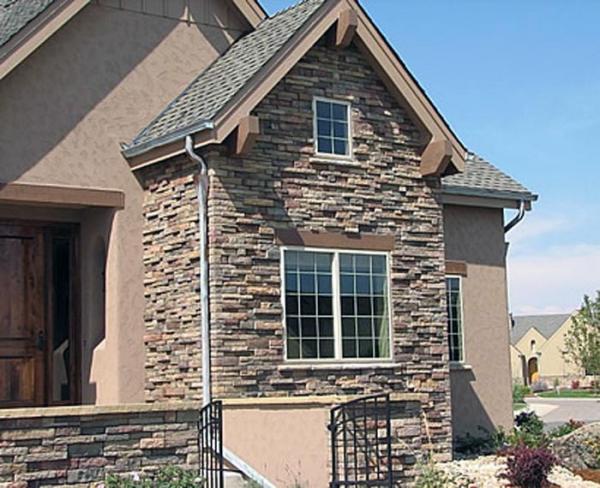
Both ceramic tiles and porcelain tiles are reliable and time-tested finishing materials. If we talk about a private house, then they are among the most profitable finishes in the financial plan. They are used for exterior finishing of the walls of a private house. Their merits and demerits will be discussed in more detail in the next section.
Materials for exterior decoration of the house - their advantages and disadvantages
Plaster. The most important advantage of this kind of finishing is that plaster is the cheapest and uncomplicated kind of work on finishing the facade of a private house. You can master the plastering skill from the very first time, and the effect from its application will be noticeable for many years.
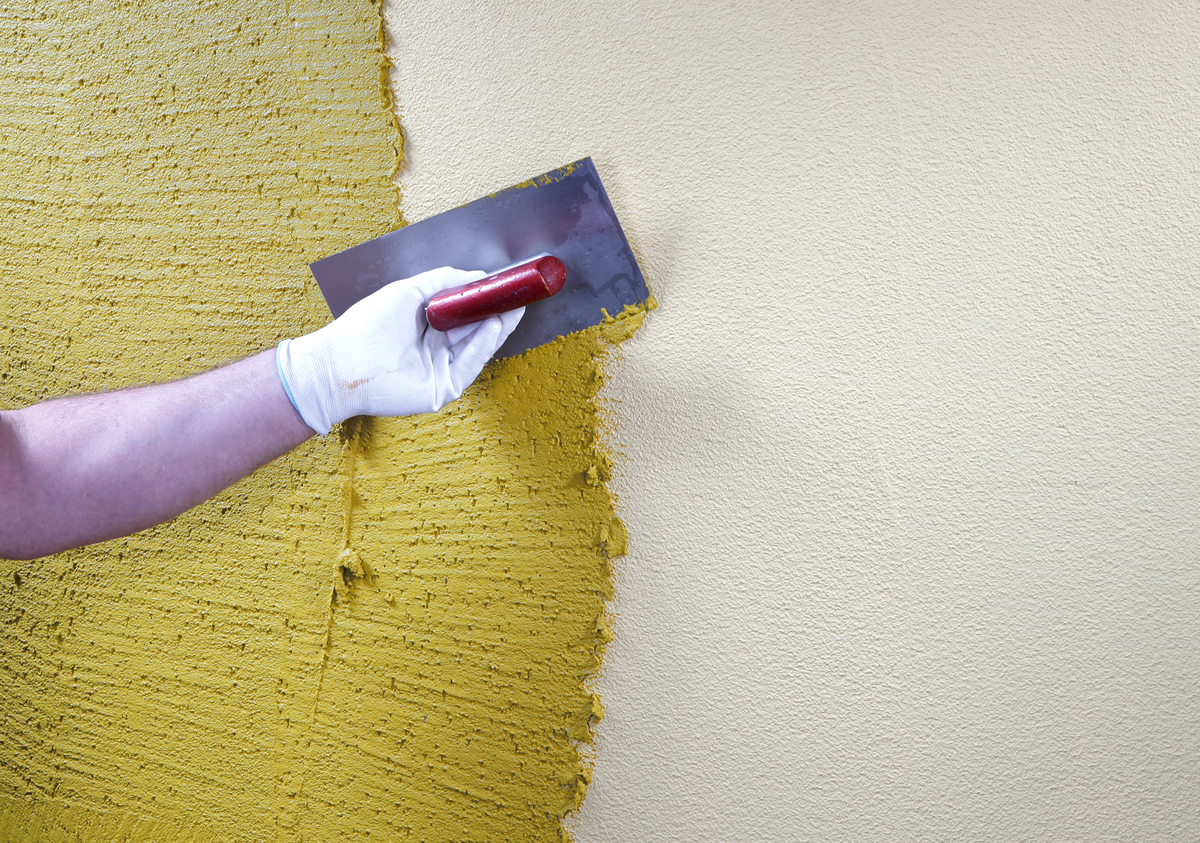
Also unquestionable advantages of plaster are the monolithic surface obtained at the completion of the finish, and the technological accuracy of its application. Gypsum plaster is also very durable - it can last you even up to a quarter of a century (provided that all the technological requirements for it are met exactly).
Among the shortcomings can be listed, firstly, the laboriousness of performing work to improve the facade of the house and their speed (due to the fact that all technological operations for plastering walls are carried out manually, this greatly increases the term for finishing plastering works).
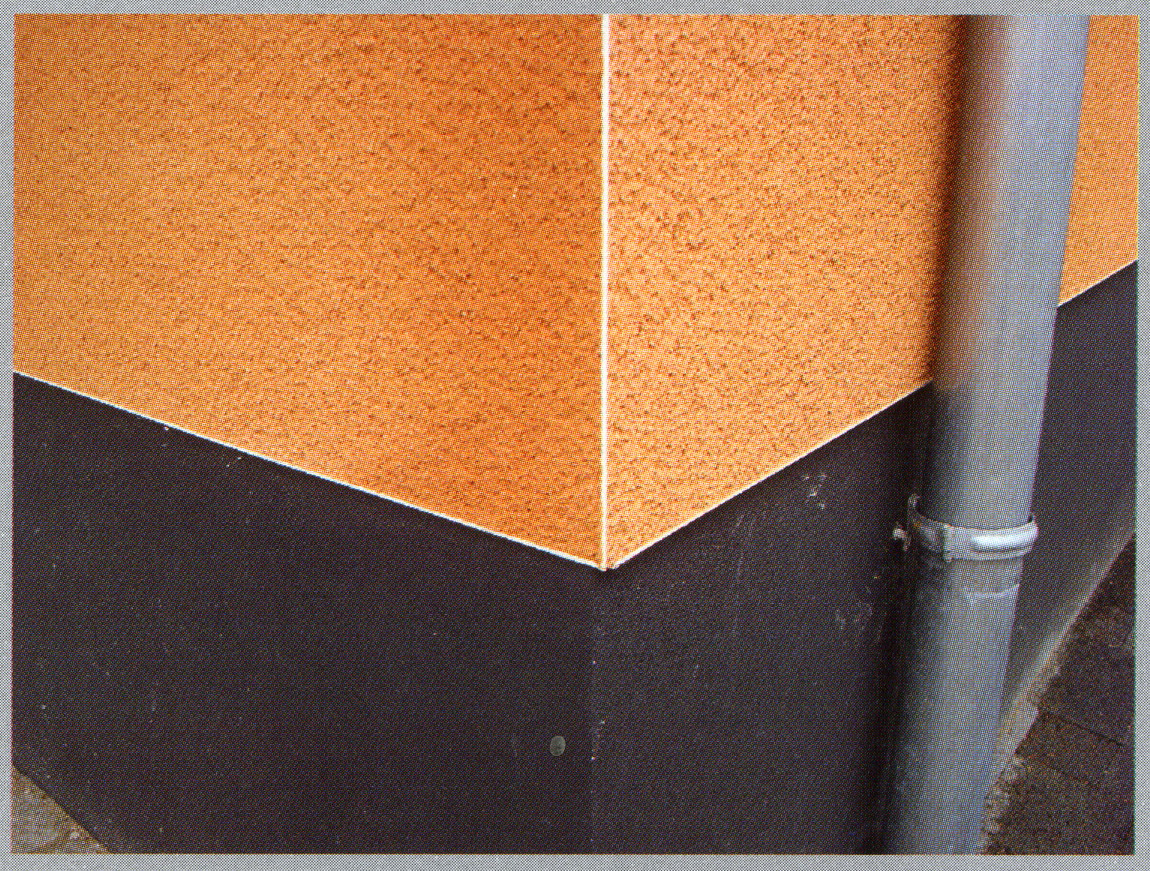
Siding. The siding has many advantages, firstly, it is very durable - the service life of this modern finishing material is up to half a century.
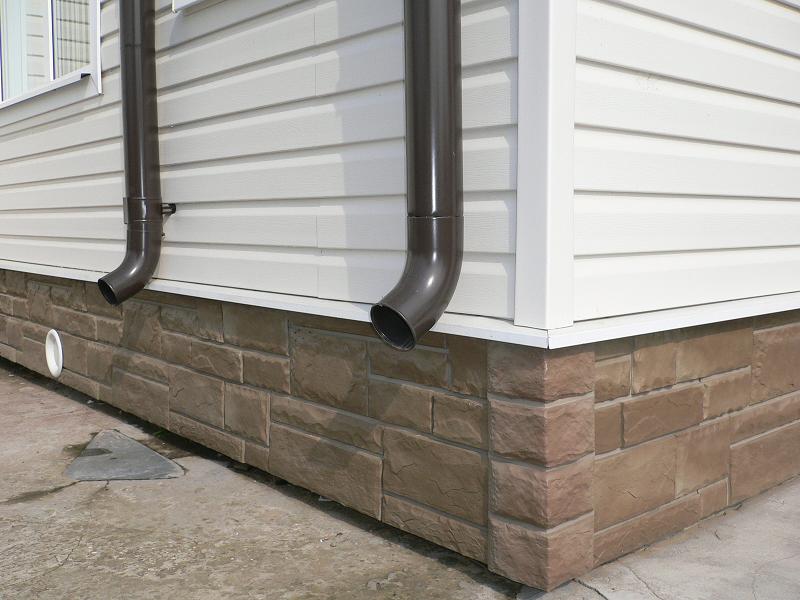
Also, siding absolutely does not attract dust and dirt - in order to wash it, it is enough to direct the pressure of water from the hose on it, besides the siding does not absorb unpleasant odors.
Siding panels made of wood and PVC weigh very little - they can raise and mount any average man. For this reason, for mounting the siding, you do not need to hire lifting equipment, which will shorten the time of installation work.
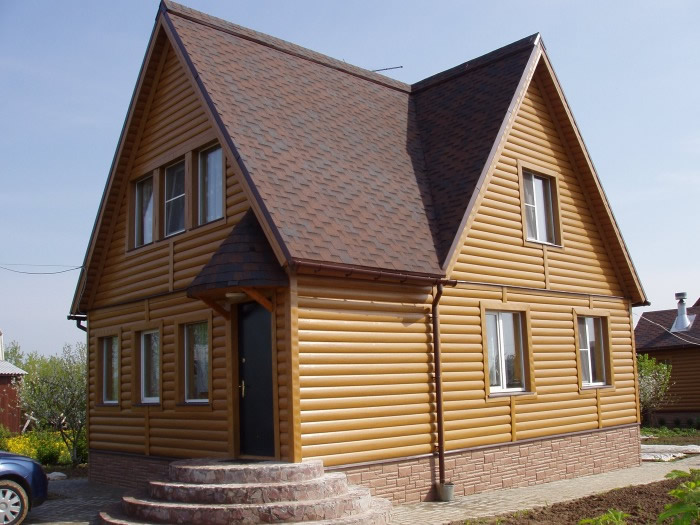
Installation of siding panels is also facilitated by the fact that they have convenient locks with special built-in latches, which greatly simplifies the installation on the walls of the house. Also installation of siding can be carried out in any weather and season (unlike, for example, plastering). Siding is resistant to all kinds of adverse mechanical effects, environmentally friendly and almost non-combustible.
Among the shortcomings can be called the high cost of siding panels made of metal, as well as the appearance of the facade of the house (some do not like their too "official" strict look).
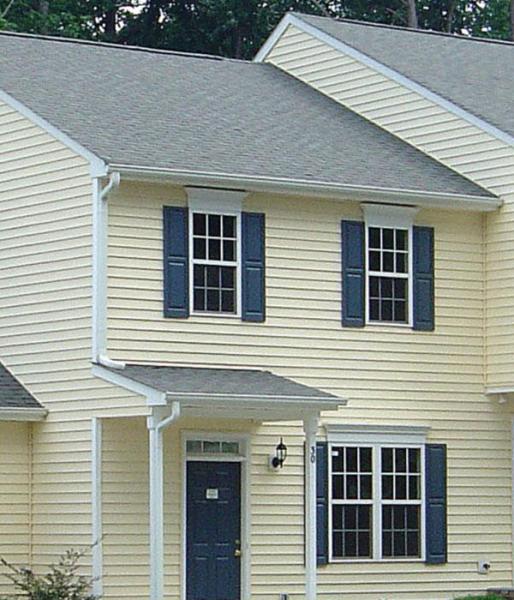
Fake diamond. The main advantage of artificial stone is its high adaptability (compared to real stone). First, it affects the process of its processing. So, on sale it is possible to meet already ready its elements with necessary corners and rounds necessary for installation (for installation on slopes of doors and windows). Also important is that when using artificial stone there is no need to prepare the surface for its installation (unless the surface is not wooden).
One of the significant disadvantages of artificial stone is the laboriousness of its use during the cladding process: it is necessary to thoroughly surface the surface, apply expensive adhesive compounds and use the labor of highly qualified specialists. Also it is impossible not to mention its high cost.
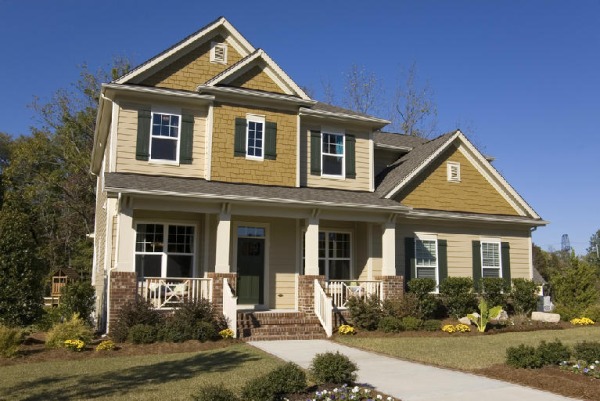
However, the fact that the artificial stone gives any, even the most unpretentious, kind of house a presentable appearance, because the most insignificant building acquires solidity, all this makes it a worthy competitor to other popular facing materials.
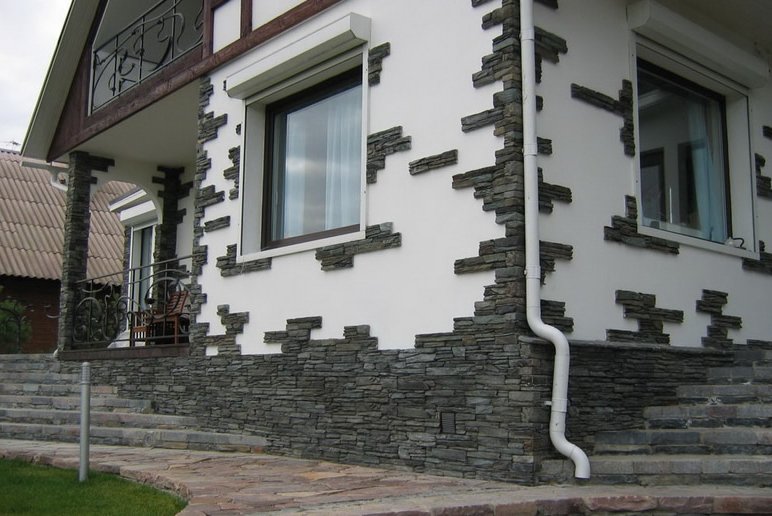
Positive aspects - a rich palette of colors and shades, the dimensions of the ceramic material, giving a wide choice of solutions for facing; do not require special care, are characterized by low water absorption and high resistance to temperature fluctuations, increased fire resistance and strength.
The only drawback is the cost of ceramic facing materials for outdoor decoration: this is expensive material, and the work on tiling the walls of the house is quite expensive.
Prices for finishing materials for facades
The most traditional is the finishing of the facade of a private house, as plastering (with the possibility of subsequent painting) and lining (natural wood). These are the cheapest types of cladding.
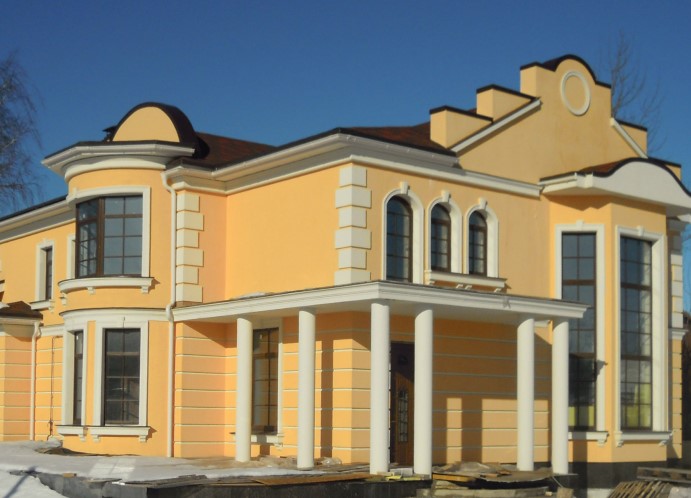
Quite inexpensive will cost decoration of the facade of a private house with such popular now inexpensive materials, as vinyl (PVC) or metal siding, as well as facade foam.
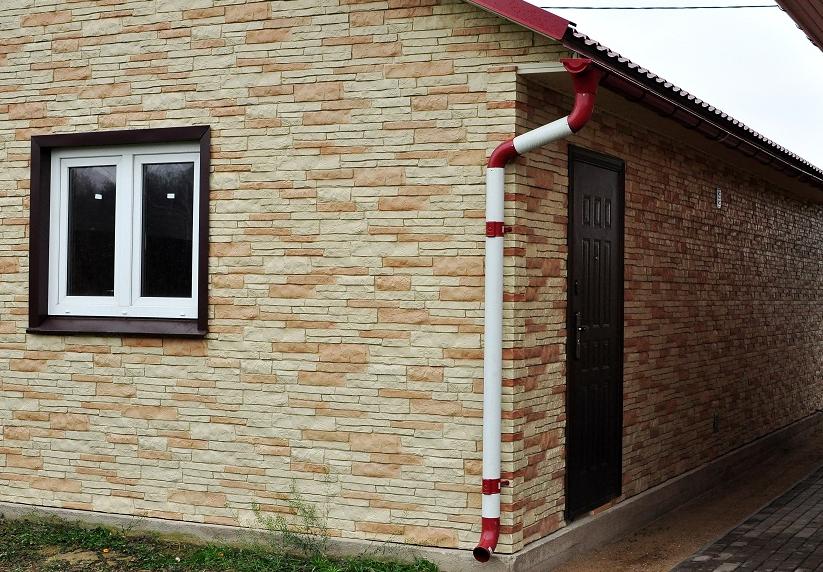
Another inexpensive finishing material are panels and decorative elements made from reinforced polystyrene foam.
Clinker tiles that simulate clinker bricks will also not cost you half of your family budget - it is relatively inexpensive (compared, for example, with natural brick).
Of expensive finishing materials, you can also mention natural stone and real brick, as well as granite (artificial granite) and marble.

So, at the end of this article, we bring to your attention a small video story, explaining what we discussed today, namely, modern materials used for exterior decoration of the house.



















